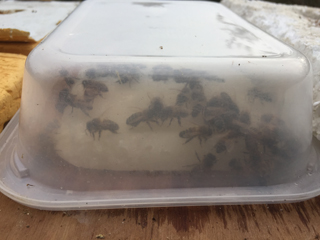 I’ve just had a quick look back at last year’s February BeeMania and what I reported then is more or less what I plan to say this month as well! My wife suggested I just submit last year’s report (I think she was joking!) but I might get caught out if I tried that, so I shall write what no doubt will be similar to what any other bee blogger across the UK is writing at this time.
I’ve just had a quick look back at last year’s February BeeMania and what I reported then is more or less what I plan to say this month as well! My wife suggested I just submit last year’s report (I think she was joking!) but I might get caught out if I tried that, so I shall write what no doubt will be similar to what any other bee blogger across the UK is writing at this time.
First of all, the bees. As reported last month, I have been making fondant feed for them and have installed it on all my home apiary hives and also my Tregony hives – the Portscatho hives will get theirs during the coming week. The difference between colonies, though, is quite amazing. One of my colonies, in a polystyrene nucleus hive, is already bursting at the seams and was flying quite busily on the day I was installing the fondant, despite the light mizzle that was soaking me, if not them – and they let me know they knew I was there!
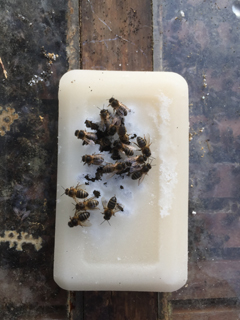 Other colonies, on the other hand, remained totally unaware that I was doing anything and were not even bothering to fly out. I suspect these are the ones I shall be re-queening in the Spring, as they are most likely on the extreme Italian edge of racial genetics. This means that they would only likely fly and forage on “fair-weather” days, even though their stores are being depleted and there is pollen out in the fields for them to bring in (it’s the pollen, mainly from gorse at the moment, that the bees need at this time of year to feed the increasing number of young bees that the queen is producing – there is plenty of sugar/carbohydrate stores in or on the hive for them). So, a good indicator of what will be among my first tasks once the season starts.
Other colonies, on the other hand, remained totally unaware that I was doing anything and were not even bothering to fly out. I suspect these are the ones I shall be re-queening in the Spring, as they are most likely on the extreme Italian edge of racial genetics. This means that they would only likely fly and forage on “fair-weather” days, even though their stores are being depleted and there is pollen out in the fields for them to bring in (it’s the pollen, mainly from gorse at the moment, that the bees need at this time of year to feed the increasing number of young bees that the queen is producing – there is plenty of sugar/carbohydrate stores in or on the hive for them). So, a good indicator of what will be among my first tasks once the season starts.
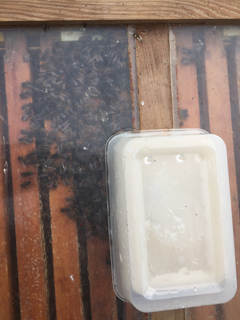 Most colonies appear to have not touched the fondant as yet, whereas a small number were visibly chomping their way through the bonus I had given them. One of the colonies at home did not have a polythene dish covering the fondant, as there was not enough space left between the top of the polythene container and the roof when I first placed the fondant on the hive, and at that time I wanted the hive to be as low as possible because of potential winds.
Most colonies appear to have not touched the fondant as yet, whereas a small number were visibly chomping their way through the bonus I had given them. One of the colonies at home did not have a polythene dish covering the fondant, as there was not enough space left between the top of the polythene container and the roof when I first placed the fondant on the hive, and at that time I wanted the hive to be as low as possible because of potential winds.
On checking today, though, they had eaten their way through the fondant and were exposing the inside of their brood box to the cold air above in the roof space. When I removed the roof, they took no notice of me whatsoever and I was able to place a container over the fondant with an extra “lift” to raise the roof a bit more (I’m hoping the winds will get less from now on, though history might tell me otherwise!), and they were left calmly munching their way through their candy as if I didn’t exist. Those are the kind of bees I like!
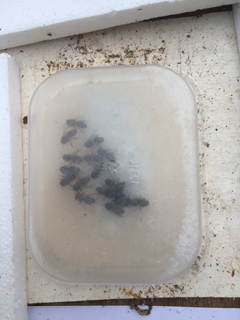 Another colony had no candy container or candy in place at all – I had forgotten about this one – as there was no space between the crown-board and the roof at the time of feeding and I intended to return later with an extra “lift” and to feed them then. I therefore placed a candy block on the feed-hole and an extra “lift” and all was well. Well, almost! An important rule when feeding bees is that you only feed them after they have stopped flying in the evening, as, once they have found the feed they will do what is known as a “round dance” to tell their sisters that they’ve found food, but it is so nearby they cannot give precise details of its location.
Another colony had no candy container or candy in place at all – I had forgotten about this one – as there was no space between the crown-board and the roof at the time of feeding and I intended to return later with an extra “lift” and to feed them then. I therefore placed a candy block on the feed-hole and an extra “lift” and all was well. Well, almost! An important rule when feeding bees is that you only feed them after they have stopped flying in the evening, as, once they have found the feed they will do what is known as a “round dance” to tell their sisters that they’ve found food, but it is so nearby they cannot give precise details of its location.
The bees then come out of the hive and start flying around looking for the source of this food, and may start to enter neighbouring hives thinking that the food source is there. They will then start robbing these hives and you can end up with a massive problem of dead bees, potential disease transfer (if there is disease in any of the hives) and so on.
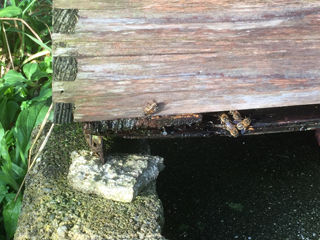 Well, when I had finished checking my other hives, I went back to the one that had been given the new container of food and, sure enough, even though it was quite a cold day and there was a cool breeze blowing, there was activity at the entrance where there had been none before. This was at 4 o’clock in the afternoon, just as temperatures usually start to drop, so as the saying goes “I think I got away with it”! However, bad practice – I should have waited until this evening. Ho hum!
Well, when I had finished checking my other hives, I went back to the one that had been given the new container of food and, sure enough, even though it was quite a cold day and there was a cool breeze blowing, there was activity at the entrance where there had been none before. This was at 4 o’clock in the afternoon, just as temperatures usually start to drop, so as the saying goes “I think I got away with it”! However, bad practice – I should have waited until this evening. Ho hum!
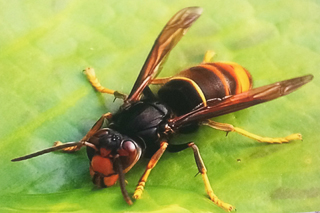 Currently, I am still in the process of rendering old combs, by breaking them up and melting them in the oven so that I can recover the clean wax that is still contained in them. It means the oven is occupied both day and night for a few weeks (luckily we have an Aga, so there’ no extra cost involved – that came up front when we bought it!!). Once this is complete, it will be on to the melting down of combs containing ivy honey which granulated in those combs whilst they were still in the hive. When melted, the wax floats to the surface and, on cooling, can be removed as a slab, leaving the ivy honey underneath ready for bottling – but that’s for another time.
Currently, I am still in the process of rendering old combs, by breaking them up and melting them in the oven so that I can recover the clean wax that is still contained in them. It means the oven is occupied both day and night for a few weeks (luckily we have an Aga, so there’ no extra cost involved – that came up front when we bought it!!). Once this is complete, it will be on to the melting down of combs containing ivy honey which granulated in those combs whilst they were still in the hive. When melted, the wax floats to the surface and, on cooling, can be removed as a slab, leaving the ivy honey underneath ready for bottling – but that’s for another time.
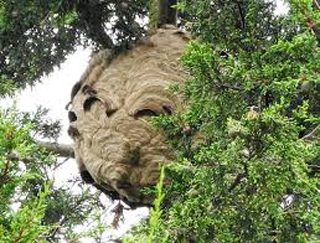 Finally, a reminder about the Asian Hornet. Queen hornets will be emerging from hibernation shortly and will be establishing their new nests. Please keep your eyes skinned for this deadly threat to honey bees and report any sightings of Hornet or nest as detailed in earlier reports – or ring me, even if you’re not 100{c8c3b3d140ed11cb7662417ff7b2dc686ffa9c2daf0848ac14f76e68f36d0c20} sure it is an Asian Hornet. Better safe than sorry!
Finally, a reminder about the Asian Hornet. Queen hornets will be emerging from hibernation shortly and will be establishing their new nests. Please keep your eyes skinned for this deadly threat to honey bees and report any sightings of Hornet or nest as detailed in earlier reports – or ring me, even if you’re not 100{c8c3b3d140ed11cb7662417ff7b2dc686ffa9c2daf0848ac14f76e68f36d0c20} sure it is an Asian Hornet. Better safe than sorry!
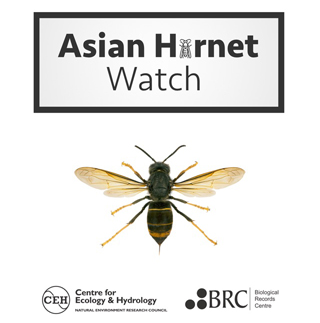 The Asian Hornet has yellow legs, is mainly dark from above but with a yellow/orange 4th segment (the body segments are quite pronounced) and has wings longer than its abdomen. It is vital that we prevent this exotic pest from establishing in the UK. We have had two close shaves – it might be third time lucky for the Asian Hornet if we pretend it isn’t going to happen.
The Asian Hornet has yellow legs, is mainly dark from above but with a yellow/orange 4th segment (the body segments are quite pronounced) and has wings longer than its abdomen. It is vital that we prevent this exotic pest from establishing in the UK. We have had two close shaves – it might be third time lucky for the Asian Hornet if we pretend it isn’t going to happen.
Colin Rees – 01872 501313 – colinbeeman@aol.com

